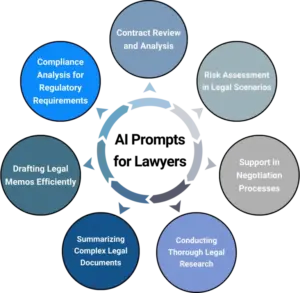In today’s busy business world, managing contracts well is a must. A smooth approval process is key to this. This article looks at why an efficient contract approval process is important. It points out the problems with manual methods. It also suggests better solutions that help companies grow, lower risks, and improve overall business efficiency.
Understanding the Contract Approval Process
The contract approval process is an important part of handling contracts. The legal team usually oversees it. This process checks that contracts follow all laws and rules, match with company policies, and show the agreed terms correctly. It has several steps. These start with drafting and reviewing the contract. Then comes negotiation and revision, ending with final approvals before signing.
Even though this sounds simple, it can get complicated. Manual approval processes often cause problems. They normally involve many people, many revisions, and can lead to mix-ups in communication. This can cause delays, missed deadlines, and higher risks.
Defining Contract Approval in Modern Business

Modern businesses need to have fast contract approval processes. This helps them stay competitive and quick to respond. But what makes a good process in today’s market? It comes down to speed, clarity, and security.
The process must be quick to avoid delays and missed chances. This means having clear roles, an easy approval hierarchy, and legal counsel should review and approve contract terms or full contracts based on set rules.
In addition, clarity means there is visibility for everyone involved. All stakeholders should be able to track the contract’s progress, know the next steps, and get timely updates about their role in the approval chain.
Key Components of a Contract Approval Process
A good contract approval process has some important parts. Finding these parts is the first step to see if you need to improve your current process:
- Clear Approval Hierarchy: It is important to organize stakeholders by their roles and duties. This helps the approval process run smoothly. It shows who approves what and when, which cuts down on confusion and stops delays.
- Defined Timelines: Each step in the process should have a clear timeline. This holds everyone accountable and makes it easier to find and fix any bottlenecks that slow down turnaround times.
- Standardized Procedures: Moving away from manual processes and creating standard ways to handle tasks like contract review, revisions, and approvals is important. It creates consistency and lowers the chance of mistakes.
While these parts are important for a good approval process, just defining them is not enough. Using technology to automate and improve these parts sets modern, agile businesses apart from those held back by older processes.
Related Article: How to Simplify Contract Review with AI? Comprehensive Guide
The Importance of Streamlining Your Contract Approval Process

A smooth contract approval process is important for businesses. It helps them be quick, manage risks, and keep costs down. If the contract review and approval takes too long, businesses can miss chances, upset clients, and even face legal problems.
That’s why companies need to focus on making their contract approval process faster. This means shorter turnaround times, fewer chances for human error, and better following of rules and policies.
Reducing Time and Costs in Contract Management
Manual processes often have many problems. Finding approvers, managing different versions of contracts, and using emails for updates can hurt productivity and raise costs.
Using contract management software can solve these challenges. An efficient contract approval process can automate tasks like sending contracts to the right people, tracking approval steps, and keeping all contract communication in one place. This change can help businesses save time and resources on contract management.
As a result, legal teams and other relevant stakeholders can spend more time on important tasks that need their skills instead of getting caught up in paperwork.
Mitigating Risks with Pre-approved Legal Templates
Compliance with laws and rules is very important for businesses today. A strong contract approval process makes sure there is a careful legal review. This helps reduce the chance of penalties for not following the rules, damage to the company’s name, and possible lawsuits.
Also, a good approval process keeps a clear record of every part of a contract’s lifecycle. This clear view is helpful for spotting and fixing problems quickly. It also ensures responsibility and improves how contracts are managed.
Having an easy approval process builds trust among stakeholders. They can be sure that contracts are checked through a solid system that focuses on following the rules and reducing risks.
Related Article: Contract Storage Made Easy: Tips for Success
Steps to Setting Up an Effective Contract Approval Workflow

Creating a good contract approval workflow takes planning and action. First, you need to look at the whole contract process. This means finding the main steps and any problems in the current workflow.
Then, set up a clear approval hierarchy. Make sure you explain each person’s role and what they need to do. Use technology to automate tasks like routing, notifications, and approvals. This helps make the process fast and paperless. Lastly, make sure that all important information is easy for stakeholders to find at every step.
Identifying and Empowering Stakeholders
Identifying all relevant stakeholders is very important for a smooth approval process. This means including people or teams that handle contract creation, review, approval, and management. This often involves sales, legal, finance, and operations teams.
After identifying them, these stakeholders should have the right tools and information. They need access to a central contract repository, clear guidelines on their roles in the approval process, and resources to help answer any questions.
Using technology and training helps empower stakeholders to engage in the approval process. This builds a culture of accountability and teamwork in making decisions.
Establishing Clear Approval Hierarchies and Roles
A well-defined approval hierarchy ensures contracts are reviewed and approved by the right people in a timely manner. This minimizes delays, prevents bottlenecks, and ensures compliance with internal policies.
Consider implementing an approval matrix that clearly outlines the approvers for different contract types, values, or risk levels. Below is a basic example:
|
Contract Value |
Approvers |
|
< $10,000 |
Sales Manager |
|
$10,000 – $50,000 |
Sales Director, Legal Counsel |
|
> $50,000 |
CEO, CFO |
This approach promotes clarity and efficiency, ensuring everyone understands their roles and responsibilities.
Integrating Automation for Efficiency
Automating your contract approval process is important for better efficiency and growth. You should invest in contract management software that helps in routing contracts, sends timely updates to stakeholders, and has a central place for reviewing and approving.
With automated workflows, there are no manual steps, which lowers the chances of human error, losing documents, and problems in communication. This makes the approval process smoother, faster, and more reliable.
Also, these automated systems can keep track of important data, like how long approvals take, find bottlenecks, and provide useful information to improve the process.
Related Article: Ultimate guide of Contract Repository Systems
Streamlining Contract Approval to Overcome Inefficiencies

Even with a clear process, problems can still happen. It’s important to deal with delays quickly, reduce human errors, and make sure all necessary approvals are received.
You should look at your contract workflow regularly. Find any bottlenecks or delays and spots where human errors might happen. Take action to fix these issues. By tackling these challenges ahead of time, businesses can keep a smooth and effective pace for their contract approval process.
Overcoming Delays and Miscommunication in Approval Processes
Delays in approval can be very costly. They can lead to missed deadlines and trouble in relationships. It is important to know why these delays happen and to fix them.
Many delays happen because of unclear workflows, not knowing who is responsible for tasks, or a lack of visibility into the process. Using technology can help. Tools that create automatic reminders, speed up stalled approvals, and show real-time details about bottlenecks can make turnaround times much faster.
You should check contract data often to find where delays often happen. Then, you can make changes and offer training to fix these inefficiencies quickly.
Using Audit Trails to Provide Visibility into Every Approval Step
As more businesses use electronic signatures and digital approvals, keeping things secure and compliant is very important. It is essential to pick a secure platform that follows the industry rules, like eIDAS and ESIGN.
Set up strong access controls. This way, only authorized people can see and approve contracts. Regularly check your systems and processes to stay compliant with changing data privacy rules and security guidelines.
By focusing on security and compliance in your digital approval processes, you protect sensitive information. This builds trust with stakeholders. It also helps reduce the chances of legal and financial issues.
Related Article: How to Review Contracts More Quickly and Effectively?
Effective Approver Engagement for Continuous Improvement in Approval Processes

Continuous improvement is essential for a successful contract approval process. It is important to use best practices like regular reviews, collecting feedback from stakeholders, and analyzing data to achieve lasting success.
Create a culture that focuses on optimization. Look at bottlenecks as chances to get better. Regularly check key metrics to see how you are doing, find inefficiencies, and make smart choices to adapt and enhance your approval workflow over time.
Approval Workflows Playbook
A static contract approval playbook can make things less efficient. It’s important to look at and update your workflows regularly. This should be based on what your business needs, best practices in the industry, and input from your team.
Check your playbook on a regular basis. Look at approval times, bottlenecks, and user feedback. This will help you find areas to improve. Use what you learn to update your workflows. This makes sure they stay relevant, efficient, and fit your changing business needs.
Remember, being open and clear is important. Involve stakeholders in the review process. Communicate updates well to make sure everyone knows. This helps everyone work together towards one goal: a smooth and efficient contract approval process.
Leveraging Technology for Better Contract Management with AI
Technological advancements are transforming contract management, with cloud-based contract lifecycle management (CLM) software providing a centralized platform to create, store, track, and manage contracts. By automating the entire lifecycle, including the approval process, it streamlines operations. Analytics further enhance contract management by offering insights into trends, bottlenecks, and areas for improvement, enabling smarter decision-making and resource allocation. AI tools take it a step further, automating contract review, identifying risks, and predicting outcomes, freeing legal teams to focus on higher-value tasks.
Volody’s CLM software enhances contract management by offering a robust, AI-driven platform designed for speed, accuracy, and compliance. It enables seamless contract creation, review, and approval while using advanced analytics to track performance and identify risks in real-time. With Volody CLM, businesses can improve efficiency, reduce legal risks, and ensure compliance, making contract management a strategic asset.
Related Article: What Is Contract Negotiation? Clear Strategies & Expert Tips
Conclusion
In conclusion, making the contract approval process easier is very important for today’s businesses. It helps save time and money, improves compliance, and reduces risks. To create a smooth workflow, you should identify your stakeholders, set up clear hierarchies, and use automation. It’s important to tackle challenges like approval delays and ensure the safety of digital approvals. Regular reviews and using technology for better management can help you improve continuously. Keeping the process simple not only increases efficiency but also leads to smoother operations and better risk management over time.
FAQs
How Can Automation and Notifications Simplify the Contract Approval Process?
Automation using contract management software and AI can make the approval process faster. It does this by routing contracts on its own, sending out notifications, and tracking progress. This way, it increases efficiency and reduces manual tasks.
Understanding the Risks of Manual Contract Approvals: A Contract Approval Matrix?
Manual contract approvals can lead to mistakes made by people. There can be problems with following the rules if steps are missed. Also, important documents may get lost, which can cause security problems. These delays in approvals can slow things down. In the end, this can hurt efficiency and might even cause money losses.
Why Is Defining the Approval Process Important in Contracts?
Defining the approval process helps everyone understand their roles. It makes things clear for the legal team and stakeholders. This way, delays are less likely. It also reduces miscommunication about contract terms. As a result, contracts can be executed on time and in line with the rules.
How Often Should the Contract Approval Process Be Reviewed for Improvements?
To keep improving, check the contract approval process regularly, around four times a year or once a year. Look at the metrics, ask for feedback, and update the process using best practices. This will help make things work better and faster.





